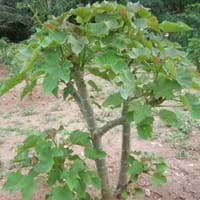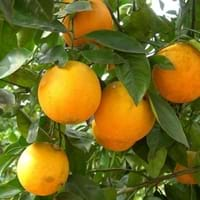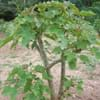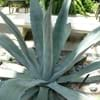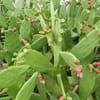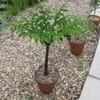Life Span
Perennial
Perennial
Type
Shrubs, Spurge
Fruit
Origin
Caribbean, Central America, South America, Madagascar, South Africa
Southeastern Asia, India, China
Types
Jatropha bullockii, Jatropha cinerea, Jatropha excisa
Louisiana sweet orange is a type of sweet orange which is a type of oranges
Habitat
Pastures, Roadsides, Warmer regions
Dry areas, Warmer regions
USDA Hardiness Zone
Not Available
9-11
AHS Heat Zone
Not Available
10-9
Sunset Zone
Not Available
H1, H2, 8, 9, 12, 13, 14, 15, 16, 17, 18, 19, 20, 21, 22, 23, 24
Habit
Upright/Erect
Oval or Rounded
Flower Color
White, Yellow, Red, Purple, Pink
White, Red, Purple
Flower Color Modifier
Not Available
Bicolor
Fruit Color
Light Green, Lime Green, Yellow, Green, Ivory
Green, Orange
Leaf Color in Spring
Green, Dark Green
Dark Green
Leaf Color in Summer
Green, Dark Green
Dark Green
Leaf Color in Fall
Green, Dark Green
Dark Green
Leaf Color in Winter
Green, Dark Green
Light Green
Leaf Shape
Palmately Lobed
Ovate
Plant Season
All year
Spring, Summer, Fall, Winter
Sunlight
Bright direct sunlight, Full Sun, Partial Sun
Full Sun
Growth Rate
Medium
Medium
Type of Soil
Dry, Sand
Loam, Sand
The pH of Soil
Slightly Alkaline
Acidic, Neutral, Alkaline
Soil Drainage
Well drained
Well drained
Bloom Time
All year
Early Spring, Spring, Late Winter
Tolerances
Drought
Drought
Where to Plant?
Ground
Ground
How to Plant?
Seedlings, Transplanting
Seedlings
Plant Maintenance
Low
High
Watering Requirements
Needs less watering, Water occasionally
Reduce watering during fall, Requires regular watering
In Summer
Drought Tolerant, Average Water
Average Water, Ample Water
In Spring
Less Watering
Adequately
In Winter
Less Watering
Alternate Days
Soil pH
Neutral
Acidic, Neutral, Alkaline
Soil Type
Loam, Sand
Loam, Sand
Soil Drainage Capacity
Well drained
Well drained
Sun Exposure
Bright direct sunlight, Full Sun
Full Sun
Pruning
Prune for shortening long shoots, Prune if you want to improve plant shape
Prune to stimulate growth, Remove dead leaves
Fertilizers
All-Purpose Liquid Fertilizer, No fertilizers needed
fertilize every 2-3 weeks while growing, fertilize in growing season, fertilize in spring
Pests and Diseases
Anthracnose, Leaf spot, Powdery mildew, Red blotch, Rust
Aphids, Caterpillars, Mealybugs, Mites, Rust, Scale, Spider mites, Whiteflies
Plant Tolerance
Drought, Drought and Salt, Heat Tolerance
Drought
Flower Petal Number
Single
Single
Fragrant Bark/Stem
No
Yes
Foliage Texture
Bold
Medium
Foliage Sheen
Not Available
Glossy
Attracts
Bees, Flying insects, Hoverflies
Birds, Butterflies
Allergy
allergic conjunctivitis, Eye irritation
Not Available
Aesthetic Uses
Not Available, Not Used For Aesthetic Purpose
Showy Purposes
Beauty Benefits
Good for skin and hair, Removes pimples, Skin inflammation, Skin irritation
Improve hair condition, Improve skin condition, Making cosmetics, Removes dandruff
Edible Uses
Sometimes
Yes
Environmental Uses
Air purification, Insect Repellent, No fertilizer, pesticides, or herbicides needed, Suppresses or replaces native plants, Versatility
Not Available
Medicinal Uses
anti-allergy, epilepsy, Fever, Skin irritation, Skin Redness
Vitamin C
Part of Plant Used
Leaves, Sap, Seeds, Stem
Fruits
Other Uses
Oil is used as fuel, Oil is used in perfume, soaps, creams, etc., Used in biomass
Used As Food
Used As Indoor Plant
No
No
Used As Outdoor Plant
Yes
Yes
Garden Design
Container, Feature Plant, Hedges, Screening, Wind Break, Topiary, Bonsai, Espalier, Tropical
Container, Edible, Feature Plant, Fruit / Fruit Tree, Hedges, Screening / Wind Break, Topiary / Bonsai / Espalier, Tropical
Botanical Name
JATROPHA
CITRUS sinensis 'Louisiana Sweet'
Common Name
Barbados nut, purging nut, physic nut, or JCL
Louisiana Sweet Orange, Orange
In Hindi
रतनजोत
Lousiana नारंगी
In German
Purgiernuß
Lousiana Orange
In French
purghère
Lousiana d'orange
In Spanish
frailejón
Lousiana naranja
In Greek
jatropha
Lousiana πορτοκαλί
In Portuguese
galamaluco
Lousiana laranja
In Polish
jatrofa
Lousiana pomarańczowy
In Latin
Jatropha
louisiana aurantiaco
Phylum
Magnoliophyta
Not Available
Class
Magnoliopsida
Not Available
Order
Euphorbiales
Rosids
Family
Euphorbiaceae
Rutaceae
Clade
Dicotyledonous
Not Available
Tribe
Jatropheae
Not Available
Subfamily
Crotonoideae
Not Available
Number of Species
Not Available
Importance of Jatropha and Louisiana Orange
Want to have the most appropriate plant for your garden? You might want to know the importance of Jatropha and Louisiana Orange. Basically, these two plants vary in many aspects. Compare Jatropha and Louisiana Orange as they differ in many characteristics such as their life, care, benefits, facts, etc. Every gardener must at least have the slightest clue about the plants he wants to plant in his garden. Compare their benefits, which differ in many ways like facts and uses. The medicinal use of Jatropha is anti-allergy, epilepsy, Fever, Skin irritation and Skin Redness whereas of Louisiana Orange is Vitamin C. Jatropha has beauty benefits as follows: Good for skin and hair, Removes pimples, Skin inflammation and Skin irritation while Louisiana Orange has beauty benefits as follows: Good for skin and hair, Removes pimples, Skin inflammation and Skin irritation.
Compare Facts of Jatropha vs Louisiana Orange
How to choose the best garden plant for your garden depending upon its facts? Here garden plant comparison will help you to solve this query. Compare the facts of Jatropha vs Louisiana Orange and know which one to choose. As garden plants have benefits and other uses, allergy is also a major drawback of plants for some people. Allergic reactions of Jatropha are allergic conjunctivitis and Eye irritation whereas of Louisiana Orange have Not Available respectively. Having a fruit bearing plant in your garden can be a plus point of your garden. Jatropha has showy fruits and Louisiana Orange has showy fruits. Also Jatropha is not flowering and Louisiana Orange is not flowering . You can compare Jatropha and Louisiana Orange facts and facts of other plants too.
